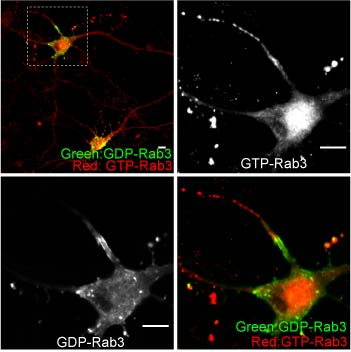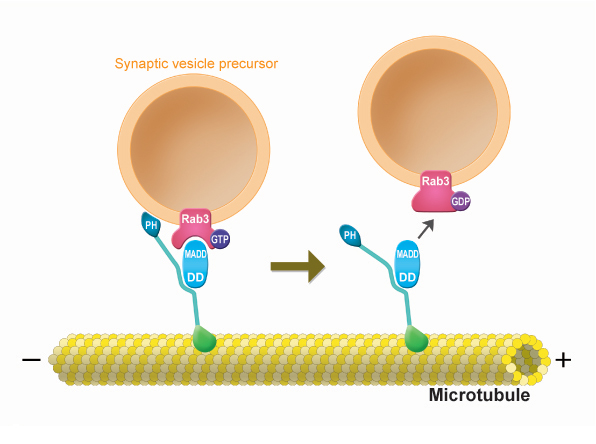Molecular mechanism of KIF1A and KIF1Bβ-mediated axonal transport of Rab3-carrying synaptic vesicle precursors
Synaptic proteins are synthesized in the cell body and transported down the axon by microtubule dependent motors. Hirokawa's group previously reported that KIF1Bβ and KIF1A motors are essential for transporting synaptic vesicle precursors; however the mechanisms that regulate this process, such as cargo recognition and control of cargo loading and unloading remain largely unknown. Hirokawa's group revealed that DENN/MADD (Rab3GEP) is a critical part of the regulation mechanism, through direct interaction with the stalk domain of KIF1Bβ and KIF1A. It was shown that DENN/MADD preferentially binds to GTP-Rab3 and acts as a new Rab3 effector. These molecular interactions are considered fundamental because sequential genetic perturbations revealed that KIF1Bβ and KIF1A are essential for the transport of DENN/MADD and Rab3, while DENN/MADD is essential for the transport of Rab3. GTP-Rab3 was more effectively transported than GDP-Rab3, suggesting that the nucleotide state of Rab3 regulates axonal transport of Rab3-carrying vesicles through preferential interaction with DENN/MADD.
Program member
Nobutaka Hirokawa (Department of Cell Biology and Anatomy, Graduate School of Medicine)

Figure 1 GTP-Rab3 (Red) is preferentially transported into axons while GDP-Rab3 (Green) is not.

Figure 2 A model showing how KIF1A and KIF1Bβ recognize Rab3-carrying vesicles
